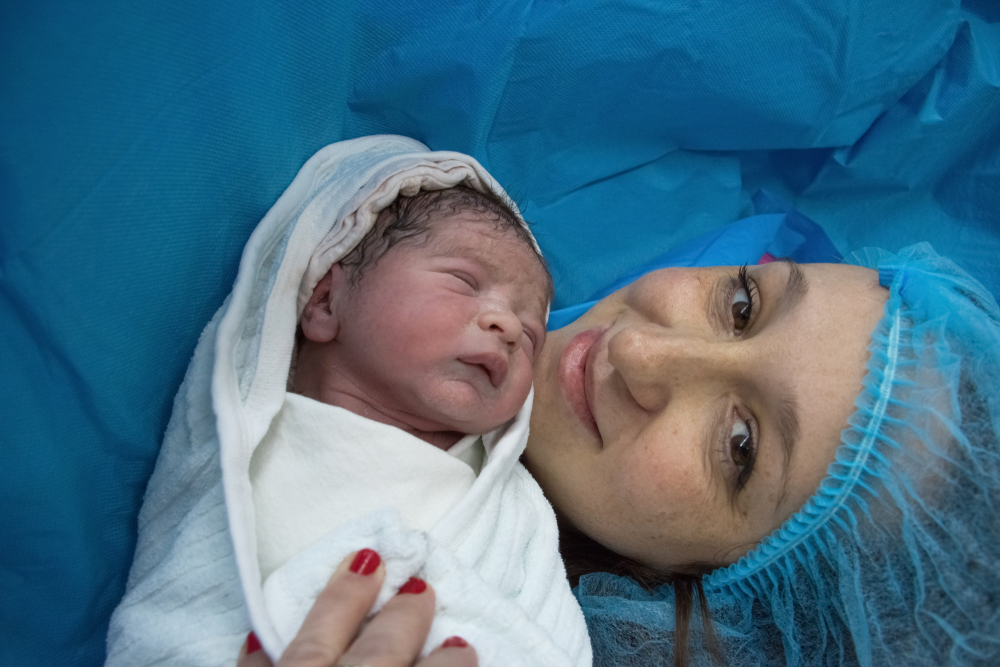
There are nearly endless options for women giving birth. You can pick whether to use pain medications or not. You get to decide what type of health provider guides the process. You get to decide who is in the room with you. There are a lot of ways to make your birthing experience unique to you and your baby.
But when it comes to types of birth, there are just two:
- Vaginal birth
- Cesarean birth
A Cesarean, known more popularly as a C-section, is a fairly major surgery where your health care provider removes the baby from your womb through an incision in your lower abdomen and uterus.
C-section deliveries are very common and safe. But is a C-section or a vaginal birth right for you?
What to expect during a C-section
During a planned C-section, a woman is usually given a spinal block, which is an injection into the spinal fluid that numbs the lower body. In some cases, an epidural may be used, instead.
In the case of an emergency C-section, when labor complications require quick action, the delivering mother may be put under completely with anesthesia.
With the mother on her back, and a support person of her choosing by her bedside, drapes are placed to shield the mom’s view of the surgery. An incision is made, the baby is taken from the uterus and mom is sewn back up while the baby is taken to a station in the room to be examined, cleaned and handed to mom when she is ready.
How long does a C-section take?
The surgery is relatively quick. From start to finish – from delivering anesthesia to sewing up the incision – typically takes 30-60 minutes.
It can take a few more hours for the numbing effects of the spinal block to wear off.
C-section recovery time
Recovery from a C-section typically takes longer than recovery from a vaginal birth. After a C-section, a mother will usually stay in the hospital for 2-4 days after delivery.
There will be several weeks of restrictions, too, as your body recovers from the deep C-section incision. You shouldn’t lift anything heavier than your baby or drive a car for at least six weeks.
You may need pain medications for the first couple of weeks, and your OB/GYN will want to see you 4-6 weeks after delivery, too.
Can you choose to have a C-section?
Choosing between a C-section and a vaginal birth is something a mom-to-be needs to decide with her health care provider.
A C-section is primarily used for babies in a breech position or multiple births, or perhaps mom suffered an injury with a previous birth or her pelvis is too small.
C-section vs vaginal birth: Which is safer?
The safest method of giving birth is a vaginal birth with no complications. However, that is not possible for a lot of mothers, so the safest birthing method is whichever works.
“In my opinion, the safest delivery method is one where baby is born healthy and well and mom is doing great,” said Robyn Lindenmeyer, director of Women’s and Children’s Health for OSF HealthCare. “You know, I would never want to impress upon anybody what my thoughts are, and what I feel is the best method.
“I think our goal is just that mom is happy and healthy and baby is happy and healthy. So whichever way that happens is the best way for it to happen.”
There are no limits to how many C-sections you can have, but the more you have, the greater your risk for medical complications and problems with future pregnancies.
It’s also a myth that if you have a C-section, any following births have to be by C-section, too. That’s only true if there was a health issue that caused you to need a C-section, and that issue hasn’t gone away. For example, if you have hips that are too narrow for a safe vaginal delivery.
Be sure to discuss all of your birthing options with your obstetrician or whoever is delivering your baby.
Last Updated: March 9, 2023






